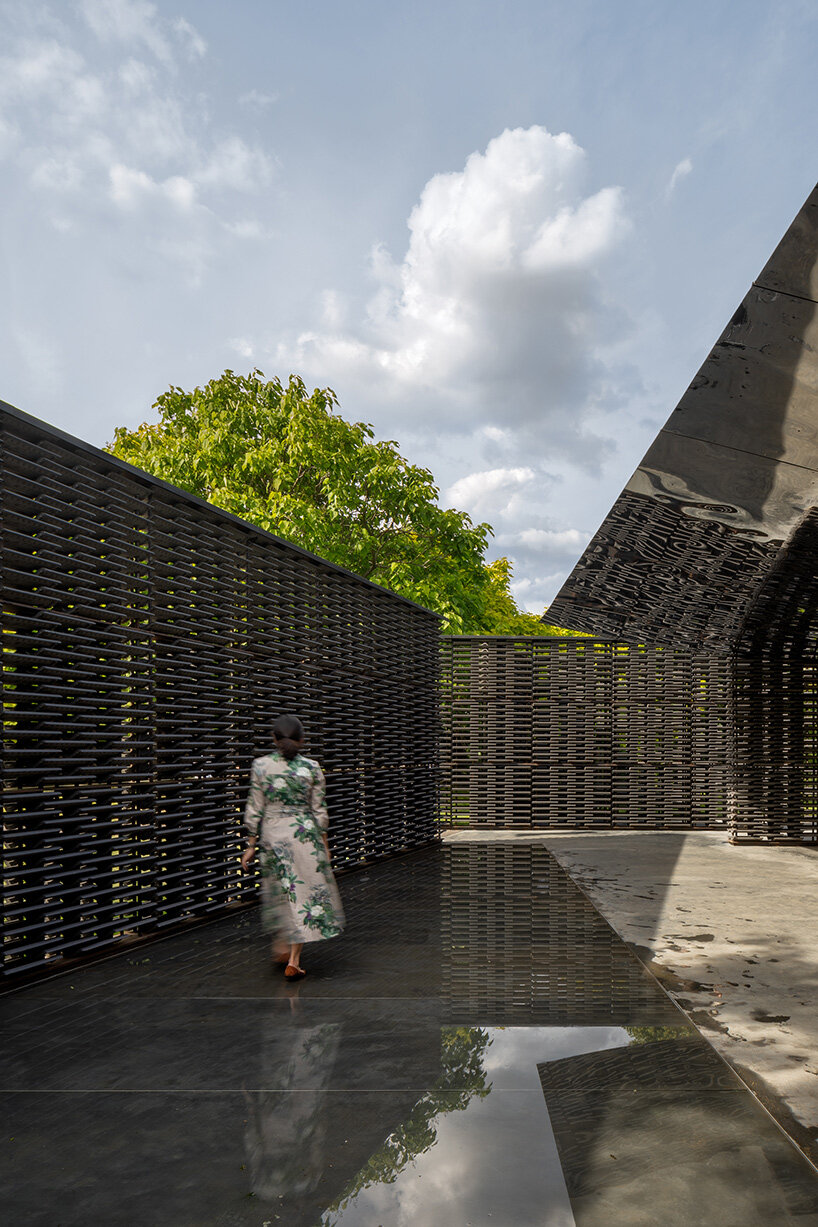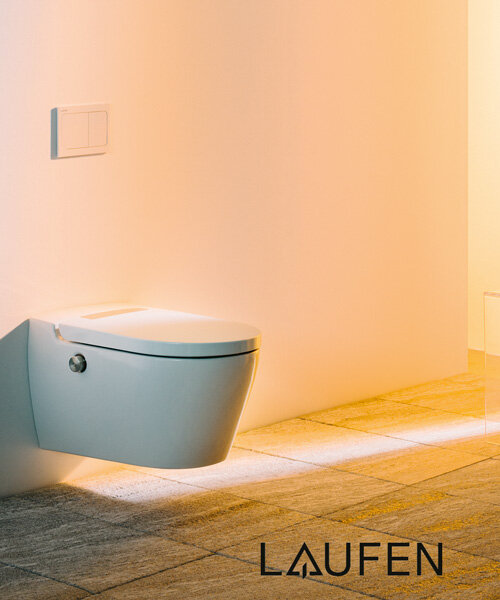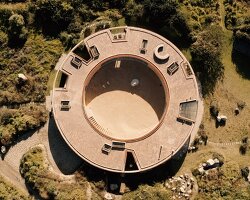while studying for his degree in architecture and urbanism, rafael gamo enrolled in a two-year photography program. ‘from monday to friday, I went to architecture school,’ gamo tells designboom. ‘on saturdays, I had intensive all-day image-making courses.’ later, while working for an architecture studio, gamo was asked to step in for a photographer who had cancelled at the last minute. ‘since the images were urgent, I was asked if I could take them since I had a background in photography,’ continues rafael gamo. ‘that was the trigger of a 16-year career in this field.’

dicotomías del poder by dellekamp + schleich | top image: matamoros market by C733
all images © rafael gamo
to deepen his knowledge of photography, rafael gamo later studied at the international center of photography in new york — where he has a base in addition to his office in mexico city. ‘the built environment has always been a big part of my work, regardless of whether it is a commissioned shoot or a long-term personal project,’ the photographer shares. gamo has extensively documented projects in mexico and beyond, with his work ranging from private residences to large-scale public installations. to learn more, we spoke with rafael gamo to discuss his working practices, the role of instagram, and his advice for young photographers. read our interview in full below.

la quinta by PPAA + DLCARQ | read more about the project here
designboom (DB): can you please start by telling us a little about your background and how you became involved in architectural photography?
rafael gamo (RG): I have a bachelor’s degree in architecture and urbanism from the universidad iberoamericana in mexico city. in parallel, I enrolled in a two-year photography program, so from monday to friday, I went to architecture school. on saturdays, I had intensive all-day image-making courses. the combination of both interests started while working for an architecture studio. we had just finished a theater, and the photographer had a last-minute problem and couldn’t make it to the shoot. since the images were urgent, I was asked if I could take them since I had a background in photography. that was the trigger of a 16-year career in this field. some years later, I enrolled in a post-graduate program at the international center of photography in new york city to deepen my photography knowledge.

estudio iturbide by taller de arquitectura | read more about the project here
DB: we’ve often featured your photography on designboom. have you always been interested in documenting the built environment?
RG: yes, the built environment has always been a big part of my work, regardless of whether it is a commissioned shoot or a long-term personal project. even before I started doing architecture photography, my personal work has always had the urban fabric as the backdrop that structures the action in them.

MoMa PS1 young architect program 2019 by pedro y juana | read more about the project here
DB: how do you prepare in advance of a shoot? and what is the first thing you do when you arrive on-site?
RG: the keyword for me in this subject is adaptability. preparation for a shoot varies immensely depending on the client and the specifics of every project. when possible, I like to scout the building in advance in order to individuate the best angles. if that is not possible, plans and construction photographs are the next best tools that I have. however, there have been many times when I have had to head straight from the airport to a building with little or no information about it. this situation translates into a lot of improvisation, and you have to be prepared for adjusting your routines and preconceptions. even though an unplanned situation like this one might not seem ‘ideal,’ it presents an exciting challenge that allows for a lot of spontaneity and awe in the documentation process.

serpentine pavilion 2018 by frida escobedo | read more about the project here
RG (continued): an essential aspect of my work is light quality, so understanding the sun path is the first thing I focus on when I arrive on site. in a few minutes, I quickly need to understand how light will evolve throughout the day and when the best moment to photograph the different aspects of a project will be.

phillip and patricia frost museum of science by grimshaw architects
DB: how much work takes place after a shoot before the images are ready to publish?
RG: I would say that roughly I spend photographing about 40% of the total time, and the other 60% is spent in post-production. this is not because I make any radical adjustments or significant changes to my images, but because I am obsessive and technical about squeezing out the best quality possible from the digital negatives. my architecture photography is about representing a project in the most natural yet expressive way, so the focus for the viewer stays on the subject and not the post-production ‘fireworks’ that are so easily achieved nowadays with digital tools.

RF residence by JSa
DB: do you have a favorite image or series that you have photographed recently? why does that one stand out?
RG: I was recently commissioned by the new york times to photograph five different buildings in jojutla, mexico. the town had various public space reconstruction projects after the tragic earthquake that hit central mexico in 2017. public space and infrastructure are usually developed over an extensive period, but in this case, many projects were built in a very short time span. it was a very interesting and enriching experience to document the diversity of solutions by the designers and the unexpected similarities in approaches they took. also, it was a very refreshing commission because it came from a publication and not from an architect. the situation gave me a very different framework to work with, devoid of the usual expectations of a traditional architecture photoshoot.

DL1310 by young & ayata + michan architecture
DB: how do you use your instagram as a tool for communicating your work?
RG: I have used my instagram feed not as a showcase for the commissioned work that I do, but as a space where I can share other aspects of photography that drive me. images that you will find there are more related to personal experiences, trips, and ‘B-sides’ from the shoots. they are all images that inform and give new energy to my vision as an architectural photographer.

rafael gamo’s personal photography — see more examples below
DB: generally speaking, is there a particular message or sense that you want your images to convey?
RG: many times, my photographs are not intended to merely be a document about the subject I am photographing, but they tend to be more the reflection of the connections between different parts of it. I am constantly looking for alignments, affinities, collisions, ambiguities, fleeting moments… I believe that they are images that tell stories about intangible things that are not in the frame, and this is where the viewer is the one that needs to step in and fill in the gaps.

DB: what advice would you give to today’s young and aspiring photographers?
RG: photography, a bit like architecture, is both an art and a craft that has been around for almost 200 years. for the artistic part of it, my advice would be to see, but most importantly, absorb as many ‘good’ images as you can. the larger your mental archive is, the more it will reflect in your work. it doesn’t need to be only photography; it can be painting, drawings, theater, film, etc. composition and visual references will stick to the back of your mind and will unconsciously re-surface when you are making your own images.

RG (continued): on the technical aspect, my advice would be to really dig deep into the craft of photography and stay away from too many easy recipes that come from online tutorials. I am not a film nostalgic, but I do believe that there is a lot to learn about the tangible process of the transformation of photosensitive materials into images and understanding how that process has been emulated with digital technologies.























